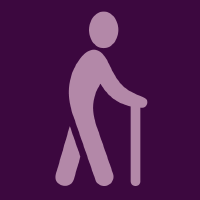Topic Menu
► Topic MenuTopic Editors

Women's Health and Aging
Topic Information
Dear Colleagues,
Women’s reproductive, maternal, newborn, child, and adolescent health (RMNCAH) plays a pivotal role in the sustainable development of the population and whole society. In the context of population aging and low fertility, women’s health becomes even more important and requires strengthened health investment. Over the years, the target of women’s health has broadened from reducing mortality to providing high-quality care across the whole lifetime of women. The key areas of focus include fertility issues, sexually transmitted diseases, breast cancer, reproductive cancers, safe motherhood, access, equity and quality of health services, and health aging for women. Remarkable improvements have been achieved in improving women’s health globally; these achievements are attributable to coordinated efforts from sectors inside and outside the health systems. However, there are still gaps around universal health coverage for women, and huge disparities exist in this field, especially in less developed regions. A comprehensive review of the current situation, determinants, policy practice, public health programs for women’s health, and summary of related experience and lessons from different countries are needed for better women’s health.
For this Topic, we encourage researchers to submit observational, experimental, and review studies related to the following aspects for women:
- maternal and child health;
- cancer screening, prevention, and treatment (including breast cancer, cervical cancer, ovarian cancer, etc.)
- sexually transmitted diseases prevention and treatment;
- health services utilization;
- health equity;
- health aging.
Dr. Li Yang
Dr. Rosa Legood
Dr. Fei Ma
Topic Editors
Keywords
- women’s health
- maternal health
- health aging
- breast cancer
- cervical cancer
- ovarian cancer
- sexually transmitted diseases
- health services
- health equity
- public health program
Participating Journals
| Journal Name | Impact Factor | CiteScore | Launched Year | First Decision (median) | APC |
|---|---|---|---|---|---|

Cancers
|
5.2 | 7.4 | 2009 | 17.9 Days | CHF 2900 |

Diseases
|
3.7 | - | 2013 | 18.8 Days | CHF 1800 |

Geriatrics
|
2.3 | 2.7 | 2016 | 22.4 Days | CHF 1800 |

Healthcare
|
2.8 | 2.7 | 2013 | 19.5 Days | CHF 2700 |

Women
|
- | - | 2021 | 19 Days | CHF 1000 |

MDPI Topics is cooperating with Preprints.org and has built a direct connection between MDPI journals and Preprints.org. Authors are encouraged to enjoy the benefits by posting a preprint at Preprints.org prior to publication:
- Immediately share your ideas ahead of publication and establish your research priority;
- Protect your idea from being stolen with this time-stamped preprint article;
- Enhance the exposure and impact of your research;
- Receive feedback from your peers in advance;
- Have it indexed in Web of Science (Preprint Citation Index), Google Scholar, Crossref, SHARE, PrePubMed, Scilit and Europe PMC.



